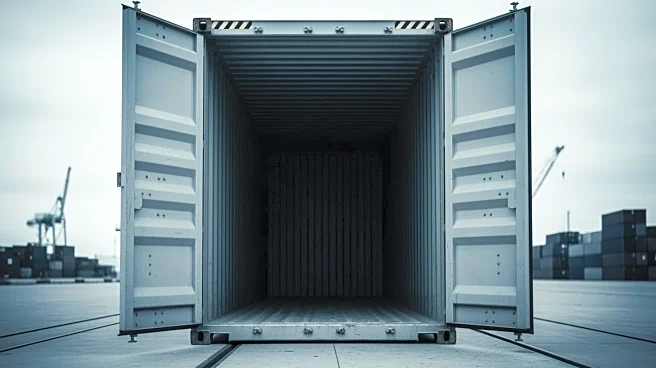What's Happening?
According to S&P Global Market Intelligence, U.S.-bound containerized freight imports experienced a 3.4% annual decline in October, totaling 2.71 million TEU. This marks a continued decrease from previous
months, with imports falling from July's peak of 3.01 million TEU. The decline is attributed to reciprocal tariffs imposed by the White House under the International Emergency Economic Powers Act, affecting most U.S. trading partners. The report anticipates a 14.4% annual decline in imports for the fourth quarter, with significant reductions expected from Asia, particularly mainland China.
Why It's Important?
The decline in U.S. imports signals potential challenges for domestic manufacturers and retailers, who may face inventory overbuilds and supply chain disruptions. The reduction in imports from Asia, especially China, could impact the availability of consumer goods and electronics, affecting retail sales and pricing strategies. The ongoing tariff situation adds uncertainty to trade relations and economic forecasts, potentially influencing business investment decisions and market dynamics. Companies may need to reassess their sourcing strategies and inventory management to adapt to the changing trade environment.
What's Next?
As the import downturn is expected to continue into 2026, businesses will likely focus on optimizing their supply chains and inventory levels. The anticipated slowdown in trade activity may lead to strategic shifts in sourcing and production, with companies exploring alternative markets and suppliers. The evolving tariff landscape could prompt further negotiations and trade agreements, as countries seek to mitigate economic impacts and enhance bilateral relations. Stakeholders should monitor developments in trade policy and prepare for potential adjustments in global supply chain operations.














